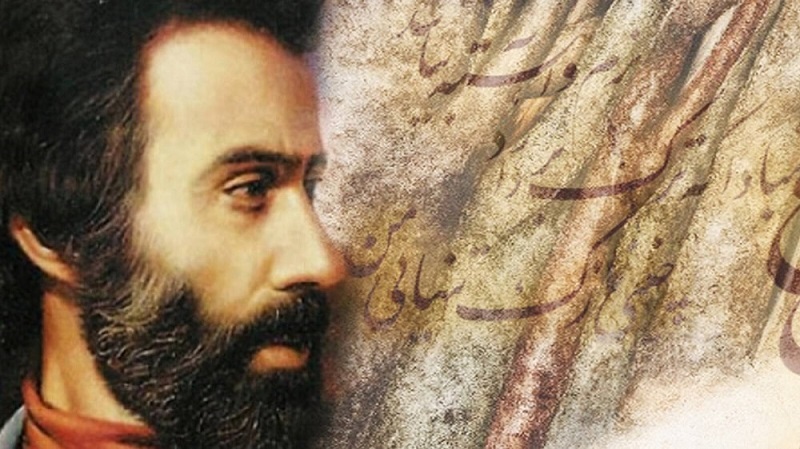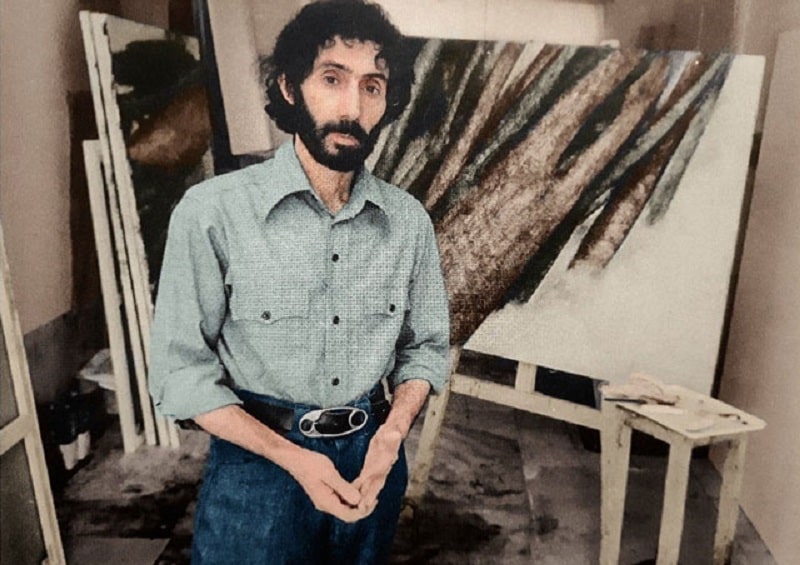Introduction to Sohrab Sepehri
Sohrab Sepehri, a prominent Persian poet and painter, was born on October 6, 1928, in Kashan. Sohrab’s mother was named Mah Jabin, and his father, Assadollah, was an employee of the Post and Telegraph Office, both of them were artists and poets. Sohrab Sepehri spent his childhood in his stunning large ancestral garden in Kashan. He spent days full of excitement in the garden house and experienced unique moments.

Education and Occupation of Sohrab Sepehri
After spending his childhood, Sohrab developed the habit of reading books and studying for set hours, and in his spare time, he also wrote poetry and drew paintings. He went to Daneshsara (Training college) from his fourth year of high school, was employed by the Kashan Department of Culture (Department of Education), and remained in the department until September 1948. Then, he came to Tehran, started studying at the Faculty of Fine Arts, University of Tehran, and while he was at this faculty, he published his first book of poetry. Observing Sepehri’s poems, Mushfeq Kashani predicted that he would give valuable works to Persian literature in the future. Sepehri graduated in 1953 and received his first degree in science. During this period, in addition to composing poetry, he also pursued the art of painting and held several painting exhibitions in Tehran, which made him known as a prominent artist, and at the same time published his second collection of poems entitled The Life of Dreams.
Travels and Experiences of Sohrab Sepehri
Sohrab had a particular interest in Eastern culture; he travelled to India, Pakistan, Afghanistan, Japan, and China to learn about other cultures and languages to gain valuable experiences. Sohrab lived in Japan for a while and learned the art of “wood carving” there. In 1953, he chose land travel to London and Paris to study lithography at the Paris School of Fine Arts. His travels were essentially a spiritual journey; this particular view of travel, especially his travels to East Asian countries and his acquaintance with the religions of India and Buddhism, influenced his poems and made the horizons of his life clearer. Describing his travel enthusiast, he says: “A person is a traveller, so he should travel as much as he can.”
His Style
Sepehri had many admirers during this period as a poet of style. After returning to Iran, he started to teach at the Tehran Academy of Decorative Arts. Sohrab Sepehri devoted his life to painting, education, and literature and never married. Regarding Sohrab’s poetic style, he is one of the contemporary poets who had accurate knowledge of Nima Yoshij’s style, the poet of modern poetry. Sohrab, while following Nima’s style, had a creative method of using more colours and words. Sohrab Sepehri is an illustrator poet, so this aspect of his poetry is related to his naturalism as Sohrab’s poetry is as colourful as his paintings. He is also concerned about a man and his destiny, hence inviting everyone to look more closely at themselves and the greater world.

Sohrab’s Collection
Sohrab Sepehri’s collection of poems works includes Eight Books, Death of Colour, The Life of Dreams, Downpour of Sunshine, East of Sorrow, The Sound of Water’s Footsteps, The Wayfarer, The Green Space, Us nil, us a look, Debris Book, and prose work of him is The room is blue.
Resting Place
He had been suffering from physical disorders and leukaemia symptoms since 1979. In January of the same year, he travelled to the United Kingdom for treatment and returned to Iran in March. Finally, on May 1, 1980, he passed away. His body was buried the next day, along with several of his relatives and friends, in the courtyard of Sultan Ali Imamzadeh, in the village of Mashhad Ardehal, near Kashan.

